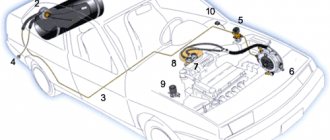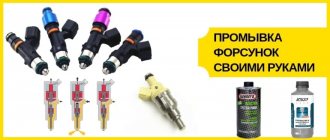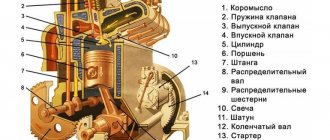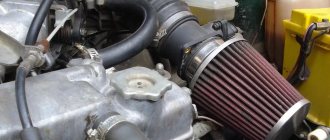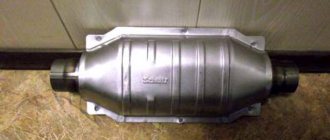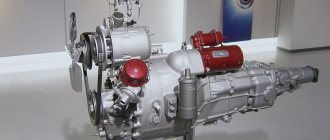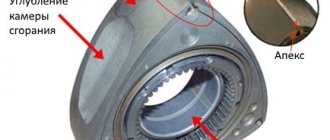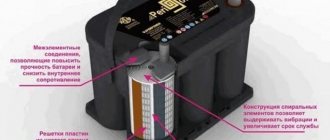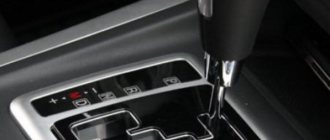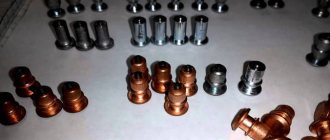The type of fuel that a car owner fills his car with is important not only in terms of the amount it costs to operate the car, but also affects the environment. What is LPG? It is a set of equipment that includes tanks (cylinders) for gas fuel, and special equipment for running a car on gas.
Modern fuel for motor vehicles consists of two types of gas fuel:
- propane-butane or LPG;
- methane or CNG.
To operate a vehicle on this fuel, it is necessary to make changes to its equipment.
What is HBO? It's economical and environmentally friendly!
The savings lie in the fact that, compared to gasoline and diesel fuel, gas is much cheaper. For domestic car enthusiasts, this becomes the determining factor to convert their “swallow” to gas fuel. To calculate how much it will cost to install equipment, you need to consult with a specialist. It is the specialist who, having assessed the potential of your car, will recommend this or that equipment.
After all, the HBO kit must be selected based on:
- vehicle characteristics;
- tasks set by the owner (commercial use, primarily driving in the city or driving on the highway);
- other features.
After agreeing on all the points, you need to make an appointment at the auto center for installation.
Regarding the environmental situation, in countries such as, for example, Germany and the USA, environmental conservation is a way of life. Exhaust gases from gasoline and diesel fuel burning in the engine are destructive to nature and human health. But the gas in the atmosphere breaks down almost without a trace. In this regard, the leadership of both of these countries is encouraging the population to switch to gas fuel. Preference is given to methane.
Flaws
If we talk about the disadvantages of HBO, they relate more to the individual habits of the owner of the vehicle than to the technical characteristics. In addition to the substantial cost of installing gas cylinders (which easily pays for itself with active use of the car), the following disadvantages can be noted:
- Reducing the volume of the trunk, since this is where the gas equipment is usually located. Does not play a significant role for those who do not transport goods.
- Reduced engine power. This is reflected during acceleration of the car (this parameter changes by 5-10%).
- The need for regular technical inspections. For punctual car enthusiasts this is not a problem.
- The filling time for gas is longer than the filling time for gasoline.
Considering all the advantages and disadvantages listed above, you can easily conclude that it is advisable to transfer your car to a new type of fuel. If the tangible benefits outweigh the minor disadvantages for your style of car use and its design, contact us and you will be able to experience in practice all the advantages of traveling on gas.
Our company has been installing and servicing gas equipment on cars in the city of Tyumen for many years, so there is no doubt about the quality of the services. Highly qualified specialists will install a suitable modification of the equipment on your car and provide a comprehensive consultation.
From the history of the emergence and spread of HBO
It all started in Italy. More than half a century ago, in the northern regions of the country, small manufacturing companies began producing components that made it possible to convert gasoline internal combustion engines to gas. Since then, Italian-made equipment has been considered the best in the world. Italy is the largest developer of technologies related to the production of gas equipment. And also the main exporter of branded equipment, both assembled and individual components.
Manufacturers from Poland (especially for electronic components), Lithuania, China and Turkey also work successfully in this area. Recently there have also been domestic developments.
Currently, Italy is a country where cars with LPG are more common than anywhere else in the world. Many motorists in Poland, China, India, Australia and South American countries also prefer to drive on gas. Cars with LPG are becoming increasingly popular among citizens of Russia and Ukraine.
Focusing on growing consumer demand, several major automakers are already producing cars equipped with LPG from the factory.
Types of HBO
Gas equipment is available for two types of fuel:
- propane-butane;
- and methane.
In Russia, gas equipment for propane-butane is more common. Advantages of installing gas equipment for propane-butane:
- relative cheapness (compared to methane) of the equipment set;
- a large number of gas stations throughout the country;
- developed service stations.
Subjectively, gas filling stations do not look as colorful as gasoline ones. But finding a gas station near your home or on a highway on a long journey is not a problem. There are such stations in almost every region of the country. Often propane gas stations are installed at gasoline gas stations.
Another plus is that propane-butane cylinders are manufactured in two versions:
- cylindrical cylinders,
- and toroidal (replicating the shape of the tire, they are usually placed in the trunk instead of a spare wheel).
Methane is a gas supplied by the domestic corporation Gazprom to different countries of the world. Methane gas equipment is more expensive than propane-butane gas, but the fuel itself is cheaper. The disadvantage of methane gas equipment is the bulkiness and large mass of the cylinders. And the network of methane gas stations is not well developed in Russia.
What is needed to convert a car to CNG?
Firstly, as experts say, you should never save on gas equipment (gas equipment). You can instantly save 10-15 thousand, and then end up with very painful expenses at best. First you need to find cylinders that can withstand at least 200 atmospheres. Steel ones perform best, and their volume varies widely. However, they do have their downside and that is the mass. Here we do not forget about the “Platon” system, you will have to pay more and take less cargo. Well, so that the frame doesn’t bend in half or the tires don’t burst. Also, due to LPG, the car’s throttle response may drop, but the engine will receive additional power due to the high calorie content of methane.
It is also important to mention that fuel cylinders are now filled to no more than 80%, the remainder is called the “gas cut-off”, it is needed for safety at high temperatures, etc.
There is one more nuance: a gas-powered truck cannot stand for a long time at all; liquefied methane is stored in tanks under a pressure of 10 bar, its maximum storage time is 5 days. If you forget about this, an explosion may occur.
The next necessary item in the conversion are gearboxes; for methane LNG, two-stage gearboxes with mixing chambers are best suited. They have different capacities, from 9 to 30 cc. m/hour, they are usually produced for trucks and passenger vehicles. Let us note that if we consider passenger cars, then some single-stage ones are also suitable here; passenger cars “eat less” and it is easier to install such devices, but here it is from case to case.
In addition to cylinders and gearboxes, you will need an electronic control unit and a module of gas electromagnetic injectors; the principle of their operation is much similar to gasoline injectors. According to UNECE No. 115, cars that have distributed fuel injection can by law be equipped with LPG of at least the 4th generation. These can work with a standard internal combustion engine control unit via the OBD-2 diagnostic connector.
Operating principle of HBO
There are two popular HBO systems on the market:
- traditional (carburetor);
- injection.
The traditional one is installed on carburetor cars, since it operates on the principle of carburetion. The air flow entering the engine passes through a special mixer, where it is enriched with a certain volume of gas. The deeper the gas pedal is sunk into the floor, the wider the throttle (damper) opens slightly, and the greater the volume of gas fuel mixed with air ends up in the engine.
Injection-type equipment operates according to the same algorithm as a gasoline injection system. Gas fuel enters the engine by injection through electronically controlled injectors. The main thing is that the electronic unit of the LPG injector itself is configured correctly. It should not conflict with the ECU of a car that was originally released from the factory with a gasoline engine.
Advantages
Fuel economy. For this reason, in fact, they install gas cylinders on cars. The cost of gas is 2 times less than the price of gasoline. The higher the mileage, the greater the savings. You don’t have to give up long trips, and in winter you don’t have to turn off the engine when stopping.
The engine service life is increased due to the following factors:
- There is no detonation. This reduces the load on the crank mechanism. The octane number of gas is 105 and 115, and that of gasoline is 92-98.
- Dirty impurities (sulfur and lead, which are catalysts for the destruction of metals) are not released.
- No carbon deposits form on valves, pistons and spark plugs.
- Oil is not washed off from the cylinder walls.
Smooth motor operation. The gas mixes perfectly with air, this homogeneous mixture burns evenly in the cylinder. Therefore, the engine runs quietly and acceleration is smooth.
Increased mileage on one fill-up. Gas cylinders are installed in parallel with the gas tank. The car is capable of using both types of fuel. Consequently, its supply increases.
Versatility. Gas equipment can be installed on any car with a gasoline engine (and even a turbine one). Only installation on diesel cars is unjustified.
Ecological cleanliness. The composition of gas-powered vehicle emissions is significantly different from its gasoline-powered counterpart. This is of great importance in the megacities of civilized countries. Gas decomposition products are water and CO2 (harmless carbon dioxide, which produces bubbles in mineral water and drinks).
So, savings on installing gas equipment are reflected in the following points:
- Lower fuel costs.
- In extending the life of the motor.
- Saving on consumables (changing oil and spark plugs).
HBO safety
What is HBO? This is safety first!
In the very word “gas” the average person’s ear detects a certain danger, because the first thing that comes to mind is “gas can explode.” In fact, manufacturers attach special importance to the issue of safety of gas equipment operation. The equipment is designed to be as reliable as possible. And before launching a new model into serial production and sale, various tests are carried out, simulating possible emergency situations.
Safety mechanisms are built into the body of the HBO cylinder. The cylinders are equipped with a multi-valve, some can be equipped with a fire damper. And when installing after the cylinder, you can install a solenoid valve. It will prevent gas from entering the line when the vehicle's power supply system is de-energized.
An additional gas solenoid valve is installed under the hood in front of the gearbox. It is responsible for instantly stopping the gas supply when the car switches to gasoline power, or when the engine stops.
Each of the components of the gas equipment is subjected to various tests. After which, before being assembled into a single structure or sent for sale as components, it is subject to mandatory certification. For gas equipment installed at the factory, and in car service centers when converting gasoline cars to gas, the same safety standards are provided.
HBO kit
So, a complete set of HBO consists of the following main components:
- Gas cylinder;
- Multivalve;
- Filling and supply line;
- Reducer-evaporator;
- Solenoid gas valve;
- Gas/petrol switch;
- Injectors (only for HBO 4+);
- ECU (only for HBO 4+).
Let's look at each of them in more detail.
Gas cylinder
LPG components are divided into two groups, system components that store and deliver gas, and components that convert propane-butane into a liquid fraction and make the engine run on it.
The gas cylinder is a key element in terms of the safe operation of a car equipped with gas cylinder equipment. You need to approach the choice of a cylinder with the utmost seriousness and under no circumstances skimp on this unit. There are two types of cylinders:
- toroidal (for spare tire);
- cylindrical.
Often, toroidal cylinders are installed in a modern passenger car so as not to take up space in the trunk. But if in your region there are problems with gas filling stations, think about installing a cylindrical cylinder; they have a larger volume, which means the car can be refueled less often. The LPG gas cylinder is designed to store gas that is in the liquid fraction. Typically, the cylinder is filled to no more than 80% of the maximum volume; the volume of gas filled into the cylinder is controlled by an element without which it is impossible to complete the LPG - a multivalve.
Multivalve
The HBO multivalve is installed directly into the cylinder and performs the following functions with the system:
- Test. The multivalve has a special visual sensor, thanks to which it is possible to control how full the HBO cylinder is.
- Constipated. Typically, there are 2 valves on the multivalve - a supply valve and a filling valve; by closing them, the gas in the cylinder is completely isolated. Some multivalves are equipped only with a flow valve; in this case, it is possible to completely shut off only the flow of gas into the gas supply line.
- Restrictive. A correctly configured and installed multivalve will not allow the gas cylinder to be filled to more than 80% of the nominal volume. This limitation is due to the fact that when heated, gas tends to expand, but if there is no free space for expansion, this can lead to an explosion.
- Safety. The safety valve releases excess gas outside the vehicle in emergency situations (for example, when the vehicle catches fire and the temperature rises).
Filling and supply line
Transportation of gas from the cylinder to the reducer-evaporator is carried out by another unit, which is part of the gas equipment - the supply line. Until recently, gas equipment installers most often used a copper line or braided copper line to transport gas, but due to its main disadvantage - corrosion, at the moment the copper line has been almost completely abandoned.
At this point in time, thermoplastic lines are increasingly being installed on cars with LPG; it does not have the disadvantages of aluminum and copper, is quite easy to install, durable and strong. The only negative this material has is the price. Thermoplastic line is often somewhat more expensive than any of those installed previously, but its reliability, durability and safety fully justify the increased cost.
Reducer-evaporator
The evaporator reducer or LPG reducer converts gas from the liquid fraction into a vaporous gas-air mixture, on which the engine subsequently operates.
It should be noted that the reducer is installed only on gas equipment of 1-4 generations; in more modern generations of gas-cylinder equipment this system unit is no longer used.
You should select a gearbox based on the power of the engine installed in your car. It is best to give preference to gearboxes from well-known companies, for example Tomasetto or Lovato, their products are widely represented on the market in our country, and therefore it will not be difficult to find a repair kit or a similar gearbox to replace a failed one.
Solenoid gas valve
The LPG solenoid valve performs a shut-off function and, when the car is parked or the engine is running on gasoline, prevents gas from entering the flow line and the evaporator reducer. The gas valve, which is installed in front of the reducer, often also has a coarse filter that prevents small debris from entering the reducer. A car can have from one to three LPG valves installed.
Gas/petrol switch
The gas/gasoline switch button provides an indication of the fuel level in the gas cylinder, and makes it possible to switch the engine to one or another fuel manually. Typically, this element of the HBO kit is installed inside the car so that the driver has free visual and physical access to the button.
HBO classification
What is HBO? This is an opportunity to choose a famous one.
Experts distinguish three classes of systems:
The first class is represented by systems from well-known brands. This type of gas equipment consists entirely of branded components from one manufacturer. This option is the most reliable, since all components are deliberately tuned for effective interaction with each other. An example of an expensive and high-quality brand is BRC.
The second class is equipment of the “hodgepodge” type. HBO is completed from parts and elements produced by different companies. And the kit, as a rule, receives the name of the electronics manufacturer. A prominent representative of such equipment is digitronic.
This “salad” HBO is also divided into subclasses:
- systems made from components produced by various Italian companies (of fairly high quality);
- systems assembled from Chinese or Turkish-made components. This is not necessarily of poor quality, but it is still certainly worse than the first option. But much cheaper.
The third class is outright counterfeits of branded gas equipment. There is no question of quality here at all - such a gas equipment can fail at any second.
On modern trends in the development of gas and gas diesel engines
What is HBO? These are modern technologies that move forward every day!
In addition to traditional equipment and gas injection systems, Soviet engineers created gas diesel. HBO, which was installed on diesel power units.
The first representatives of gas-diesel were Kamaz trucks. The car's power plant was supplied with 80% of the gas mixture and 20% of diesel fuel. Such fuel forced Kamaz to work at full capacity. But the USSR was a rich country in which diesel fuel was cheap, so the project was considered unprofitable and was closed.
The principle of gas diesel is that gas enters the engine not instead of, but simultaneously with the main fuel - diesel fuel. The use of such technology has proven to be effective in reducing material costs for fuel, especially when operating long-haul tractors.
Now the trend of installing gas equipment on diesel engines is gaining momentum again. Gas installations successfully operate both on trucks and on comfortable sedans or SUVs.
A recent development is the use of gas in gasoline engines, whose design provides for direct gasoline injection. In this case, gas is supplied in liquid form through gasoline injectors. The 6th generation gas equipment does not have such an element as an evaporator reducer. This is an advanced solution from Vialle, which is the future of LPG systems.
